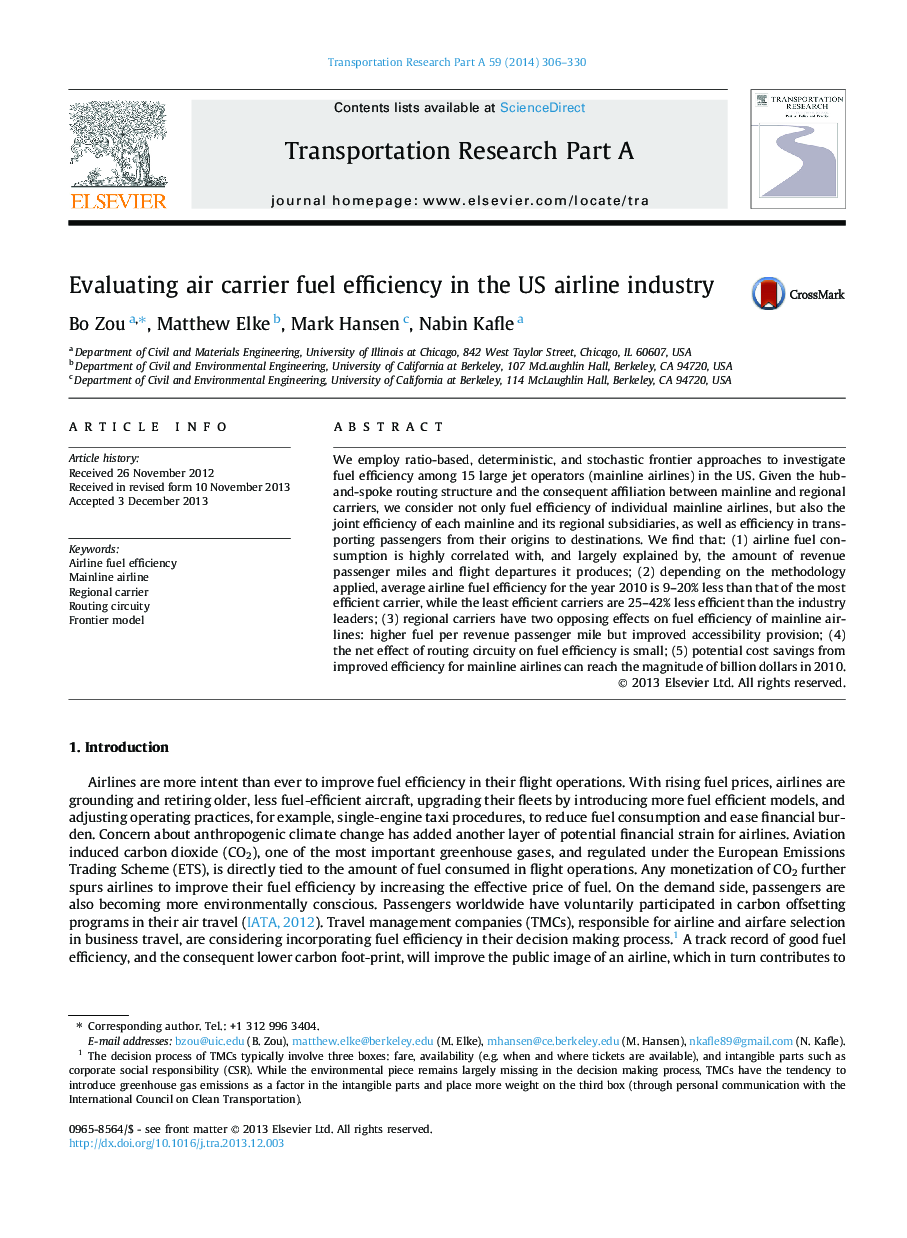| Article ID | Journal | Published Year | Pages | File Type |
|---|---|---|---|---|
| 311258 | Transportation Research Part A: Policy and Practice | 2014 | 25 Pages |
•We employ ratio and frontier approaches to investigate US airline fuel efficiency.•We consider both mainline efficiency and joint efficiency with regional affiliates.•We assess airline fuel efficiency in moving travelers from origins to destinations.•The least efficient carriers are 25–42% less efficient than the industry leaders.•Potential cost savings from improved efficiency can reach billion dollars in 2010.
We employ ratio-based, deterministic, and stochastic frontier approaches to investigate fuel efficiency among 15 large jet operators (mainline airlines) in the US. Given the hub-and-spoke routing structure and the consequent affiliation between mainline and regional carriers, we consider not only fuel efficiency of individual mainline airlines, but also the joint efficiency of each mainline and its regional subsidiaries, as well as efficiency in transporting passengers from their origins to destinations. We find that: (1) airline fuel consumption is highly correlated with, and largely explained by, the amount of revenue passenger miles and flight departures it produces; (2) depending on the methodology applied, average airline fuel efficiency for the year 2010 is 9–20% less than that of the most efficient carrier, while the least efficient carriers are 25–42% less efficient than the industry leaders; (3) regional carriers have two opposing effects on fuel efficiency of mainline airlines: higher fuel per revenue passenger mile but improved accessibility provision; (4) the net effect of routing circuity on fuel efficiency is small; (5) potential cost savings from improved efficiency for mainline airlines can reach the magnitude of billion dollars in 2010.
